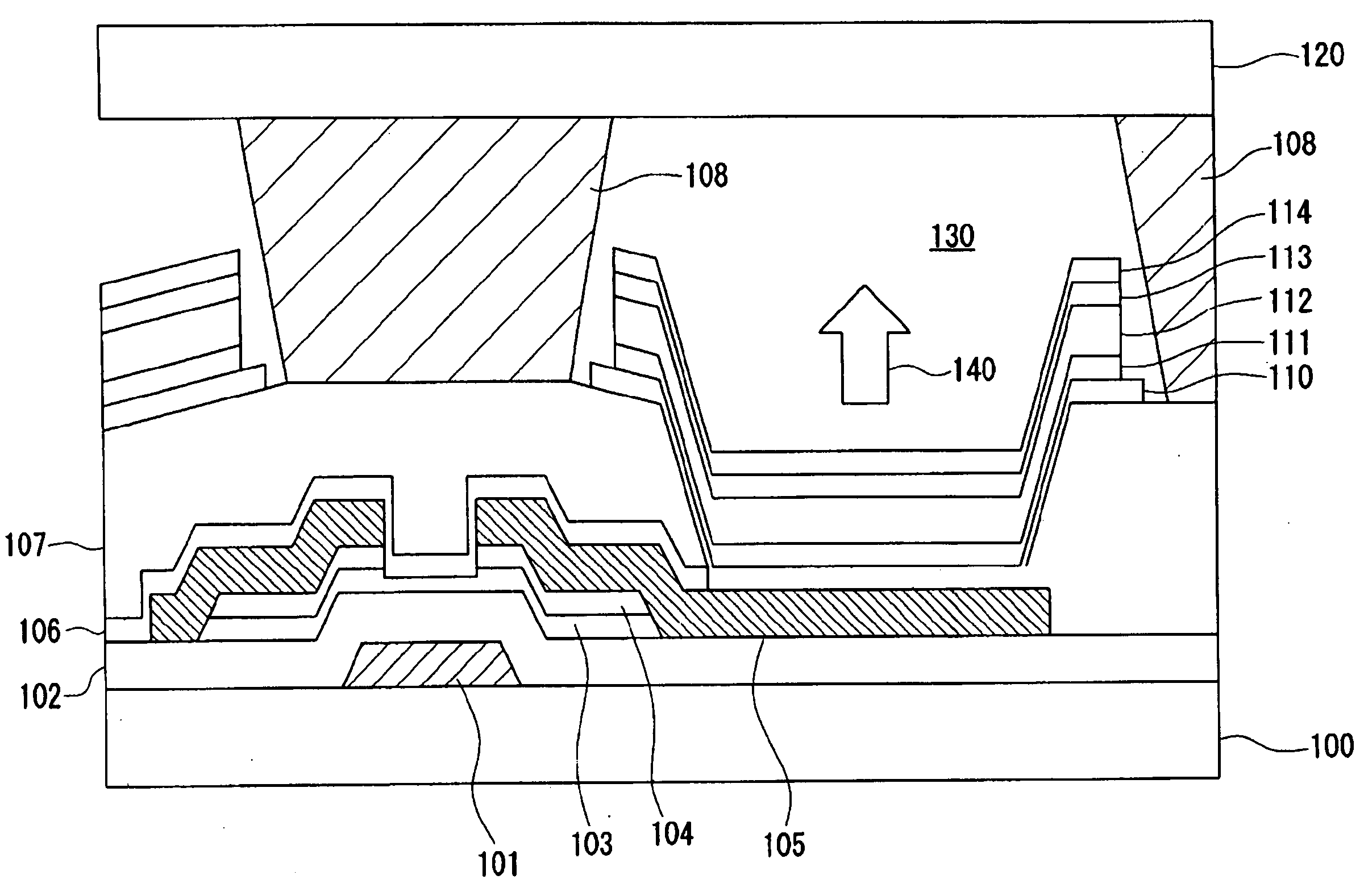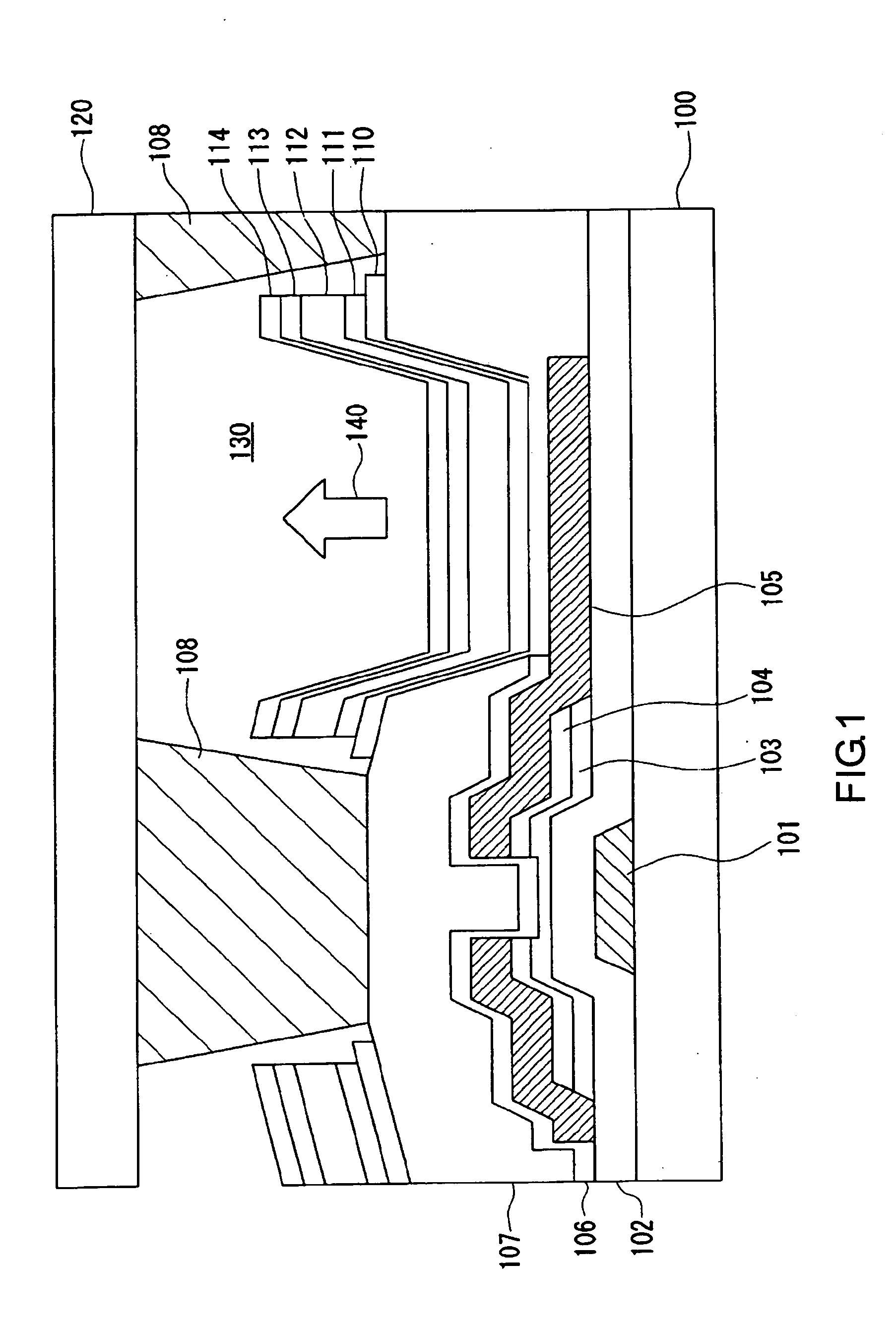Electro-optical device and electronic apparatus
a technology of optical devices and electronic devices, applied in the direction of static indicating devices, instruments, doors, etc., can solve the problems of low luminous efficiency of light-emitting elements, rapid deterioration of current-luminance characteristics of oleds, and particularly inferior luminous efficiency of oleds, so as to prevent heat drift, reduce the propagation of heat to transistors, and reliably attenuate the
- Summary
- Abstract
- Description
- Claims
- Application Information
AI Technical Summary
Benefits of technology
Problems solved by technology
Method used
Image
Examples
Embodiment Construction
[0027]FIG. 2 is an illustration showing a configuration of an electro-optical device according to an embodiment of the invention, the electro-optical device being an organic electroluminescent (EL) device in particular. FIG. 3 is an illustration showing a configuration of one of active matrix pixels placed in the electro-optical device of this embodiment. The electro-optical device will now be described with reference to FIGS. 2 and 3.
[0028] The electro-optical device 200 has an effective viewing area 201 including a plurality of pixel regions 202 arranged in a matrix. The electro-optical device 200 further includes a plurality of gate wires 241 and source wires 242, intersecting each other, for applying arbitrary image signals to the pixel regions 202. The pixel regions 202 are coupled to each other and arranged depending on the intersections. The pixel regions 202 each include corresponding OLEDs 301 and pixel-driving circuits for each driving the corresponding OLEDs 301. A gate ...
PUM
 Login to View More
Login to View More Abstract
Description
Claims
Application Information
 Login to View More
Login to View More - R&D
- Intellectual Property
- Life Sciences
- Materials
- Tech Scout
- Unparalleled Data Quality
- Higher Quality Content
- 60% Fewer Hallucinations
Browse by: Latest US Patents, China's latest patents, Technical Efficacy Thesaurus, Application Domain, Technology Topic, Popular Technical Reports.
© 2025 PatSnap. All rights reserved.Legal|Privacy policy|Modern Slavery Act Transparency Statement|Sitemap|About US| Contact US: help@patsnap.com



